
Yeah, I know what it looks like, you’re looking at that picture of Dr. Carl Gustav Jung up there and thinking, oh great, another boring dead old white guy with a moustache. To which I would say, looks can be deceiving! After all, do you think that David Cronenberg would direct an entire film about some random boring dead old white guy with a moustache? I think not! I started reading Jung in my early 30’s and have gradually become a great admirer of his life and work, and one thing that really impresses me about him is his worldliness, not just that he was well-traveled but also that he was well-read. His thirst for knowledge expanded vastly beyond his chosen profession, and his books display much erudition on topics as diverse as theology, medieval alchemy, eastern religion, anthropology, Gnosticism, mandalas, and so on. Towards the end of his life he even developed an interest in the then emerging phenomenon of UFOs, and his 1958 book Flying Saucers could be classified as one of the first serious studies in the field of Ufology. Still don’t believe me? I highly recommend his posthumous memoir Memories, Dreams, Reflections, which is one of my favorite non-fiction books and an utterly fascinating read. Some of the more memorable incidents related in the book including a dream Jung had as a child in which he wandered down a staircase in a field where he then found himself in an immense underground chamber, where he was confronted by an enormous throne, seated on which was a gigantic phallus. There was also the blasphemous vision he experienced as a teenager in which he saw God in Heaven unleash a giant turd, which fell to the earth and crashed through the roof of a cathedral, utterly destroying it. Seriously, the book is mental!
Although C.G. Jung is best known to us for his groundbreaking innovations in the field of psychiatry/psychotherapy (after all, he was the founder of analytical psychiatry), and also his anthropological work to some degree, he is now also recognized today for his work as an artist. This latter point is something of a recent development; for many years Jung’s artwork was a closely guarded secret, known only to his immediate family and most intimate friends, and though he sometimes slipped examples of his artwork into his books and lectures, he never identified himself as the creator of said art, attributing them instead to the work of an anonymous “Middle-Aged Man.” By the time of Jung’s death in 1961, none of his visual works had been published under his own name. This was mainly by design, as Jung preferred to have people seem him as a psychiatrist first and foremost, and worried that having people see him as an artist might be a hindrance to that, or a distraction.
Jung’s art skills finally became public knowledge in 2009, when W.W. Norton published a facsimile of his infamous The Red Book. Jung’s art was now exposed to a wider audience for the first time, which led to an explosion of interest in his work as an artist (it also led to various exhibits and gallery presentations of Jung’s art). This interest culminated in the publication (in 2019) of a book entitled The Art of C.G. Jung, which was assembled by the Foundation of the Works of C.G. Jung and published (again) by W.W. Norton. This book consisted of a number of essays analyzing Jung’s artwork, along with many pictorial examples of said work, not just his paintings for The Red Book but also his youthful fantastical drawings, landscape paintings from his university days, sculptures he created for his Tower at Bollingen, and so forth. This book is highly recommended for anyone who has an interest in Jung and his artwork. I would also recommend The Red Book itself, which displays these paintings in greater detail, though at $200 the facsimile edition of the book is quite pricey, on account of the fact that the book is enormous in dimensions (my parents got me a copy as a Christmas present a few years back, and it’s so large I can’t even fit it on any of my bookcases). The only flaw with The Red Book is that its large size makes it unwieldy for easy reading, though a smaller reader’s edition was also released which addresses this issue… the only flaw with that book being that it doesn’t reproduce the larger book’s images. I just got both!
Some artists that Jung enjoyed include Hans Holbein the Younger, William Blake, Arnold Böcklin, Odilon Redon, Giovanni Segantini, and Hans Sandreuter (the Symbolists in particular seemed to interest him). He also enjoyed the art of the “primitives,” such as that created by the Hopis/Pueblo Indians, and also showed an interest in acquiring items such as old alchemical prints and East Asian art (he also collected plaster busts of such luminaries as Voltaire, Nietzsche, and Homer, among others). Jung himself was somewhat ambivalent about what was then classified as ‘Modern Art’: he was very critical of the work of Pablo Picasso, for example, and the things he disliked about Picasso’s work he also linked to the writings of James Joyce (he even referred to them as “masters of the fragmentation of aesthetic contents and accumulators of ingenious shards.”) Though he found their work interesting, at the same time he didn’t find it beautiful. He also wasn’t a fan of Duchamp’s Nude Descending a Staircase, which he described as looking “…like a cigar store after an earthquake.” This negativity also extended to the Dada movement. Not that he disliked all modern artists: he seemed to have an appreciation for the work of Salvador Dali (who he described as a “genius”), and also was intrigued by the work of Yves Tanguy (he even purchased one of Tanguy’s paintings, Noyer indifferent, in 1929, for his own personal collection). But it seems Jung was less interested in art for its aesthetic merits or technical skills as he was in what the art work told him about the psychology of the person who created it.
As someone who possesses some artistic skill, I like to flatter myself into believing that I have an eye for what constitutes good art, and I feel that Jung’s art is very interesting indeed. Like many Jung enthusiasts I think that his most innovative work can be found in the paintings that he did for his Red Book. Also known as Liber Novus, this book was written during the years 1914-1918, during a prolonged mental breakdown that found Jung experiencing bizarre dreams, visions, and curious confrontations with this psyche (it was thanks to these experiences that Jung was later able to conceive his theories on the Active Imagination, the Collective Unconsciousness, the Anima and Animus, and Individuation). In the years following the transmission of The Red Book, Jung began to enhance it with his own proto-psychedelic paintings (to better illustrate the text), and I must say that I quite like most of these paintings that he did for it: to my eyes they look like they could have come off the cover of some obscure European prog rock albums, or the cover art from some 1970’s fantasy paperback dime store novel. In any event, I present you now with a number of images (24 to be precise) from Jung’s Red Book, so you can see for yourself and judge their merit with your own eyes.
Artwork from C.G. Jung’s The Red Book (Liber Novus): A Gallery
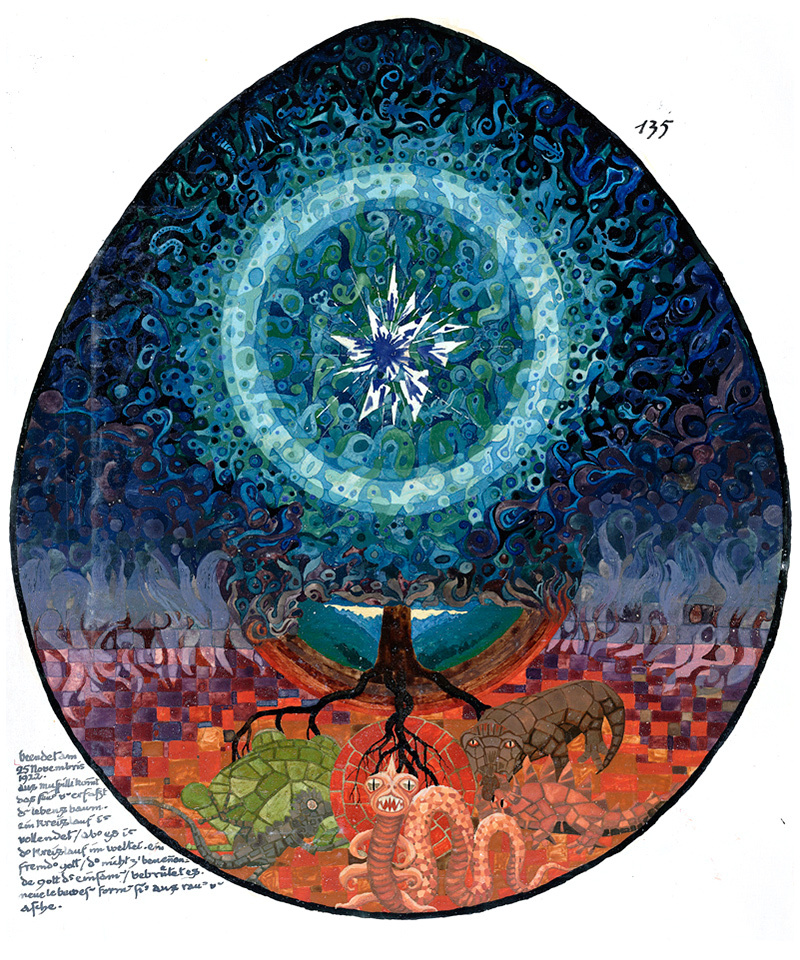
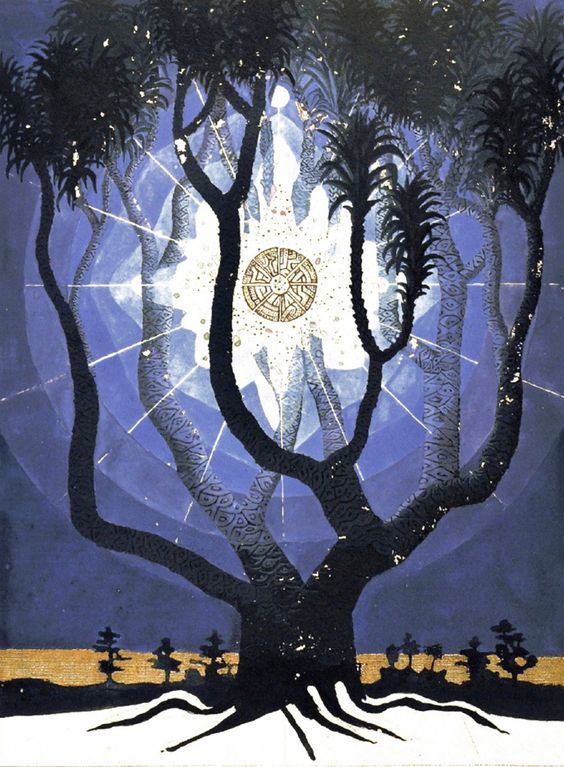
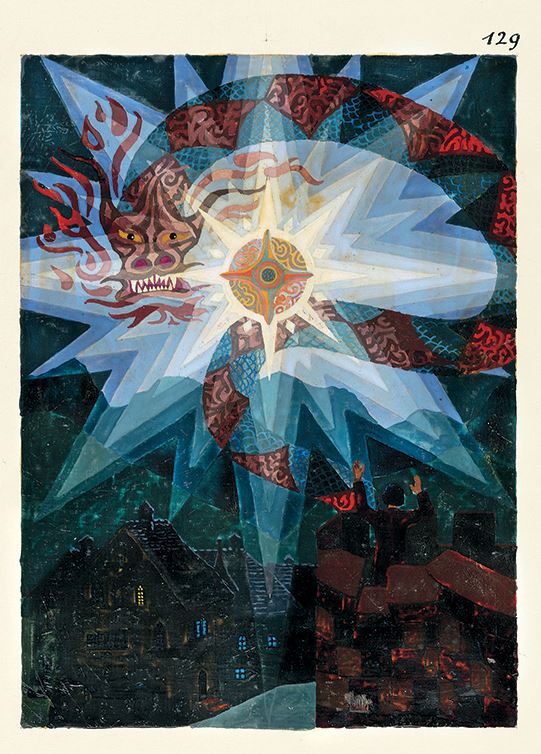
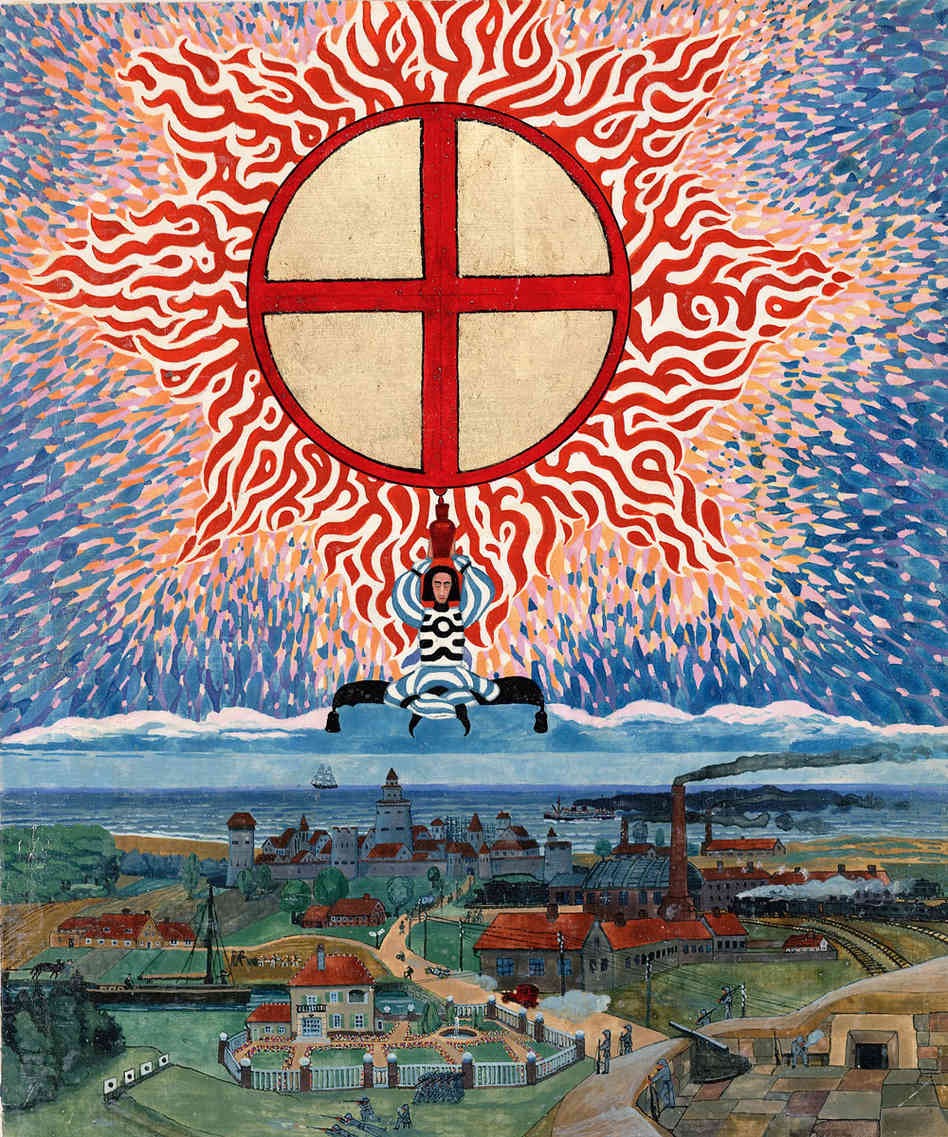





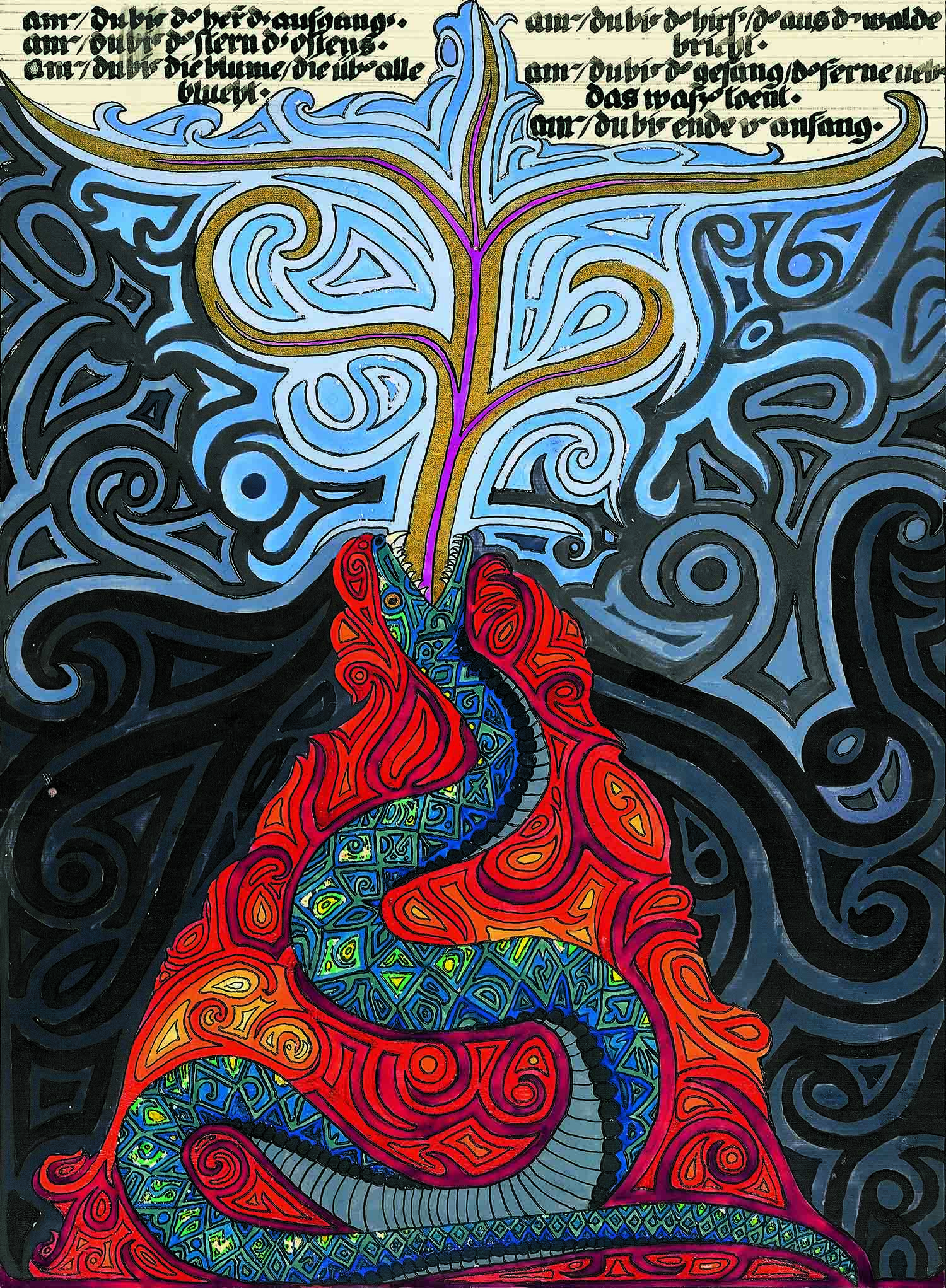


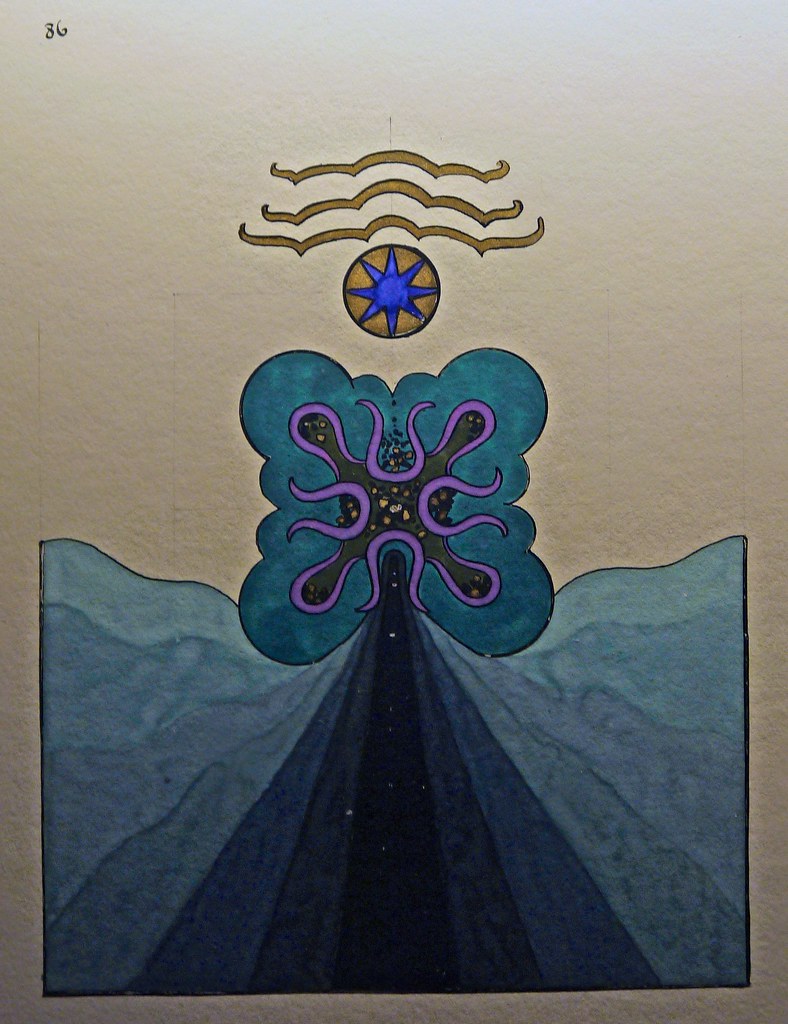

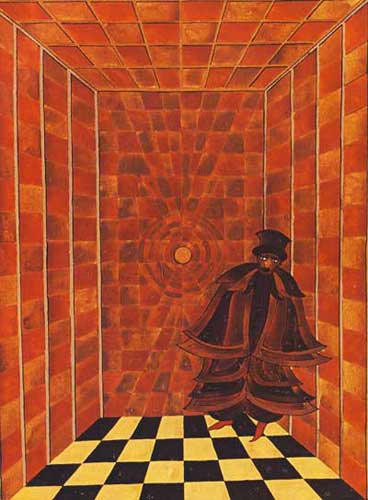
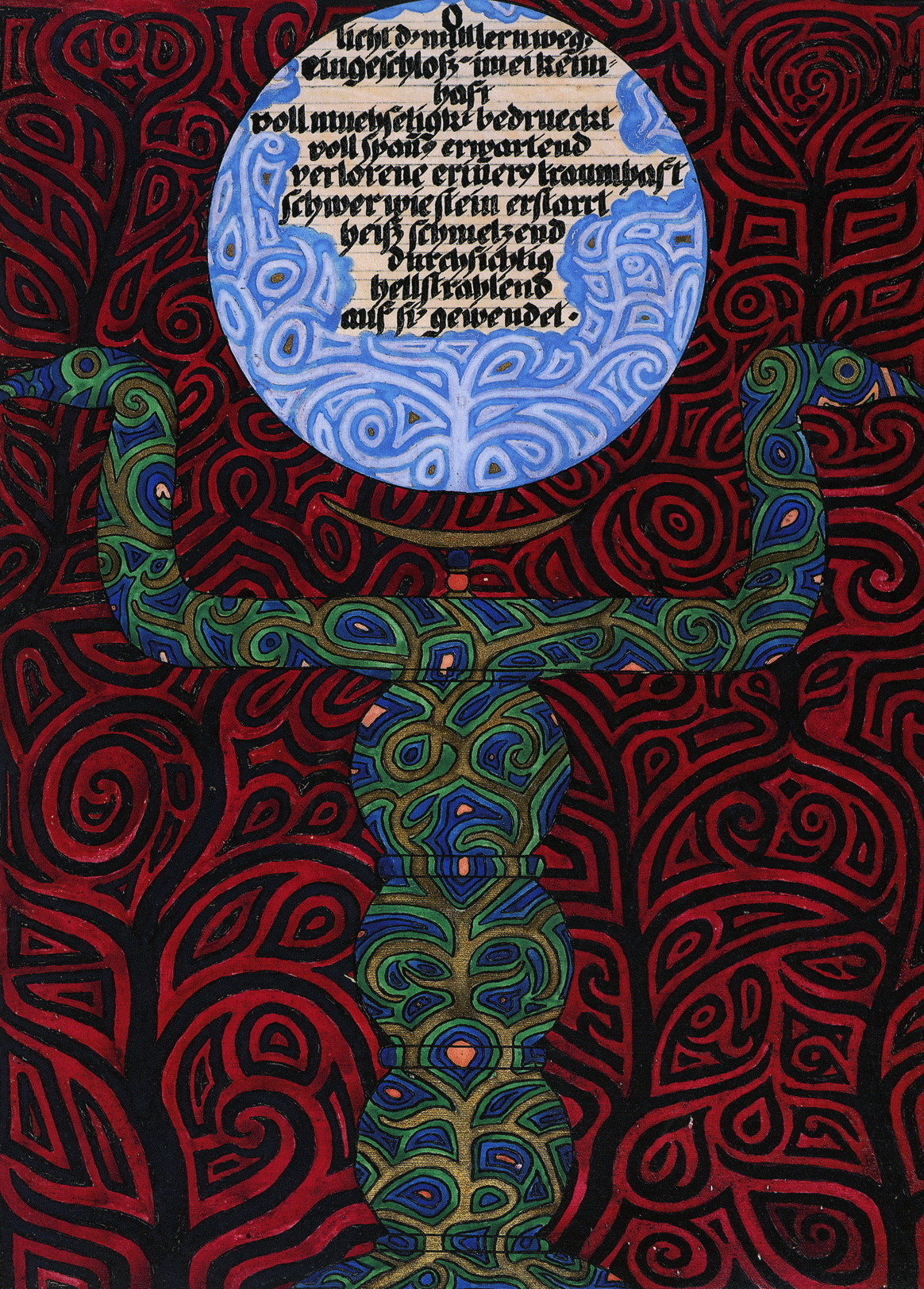
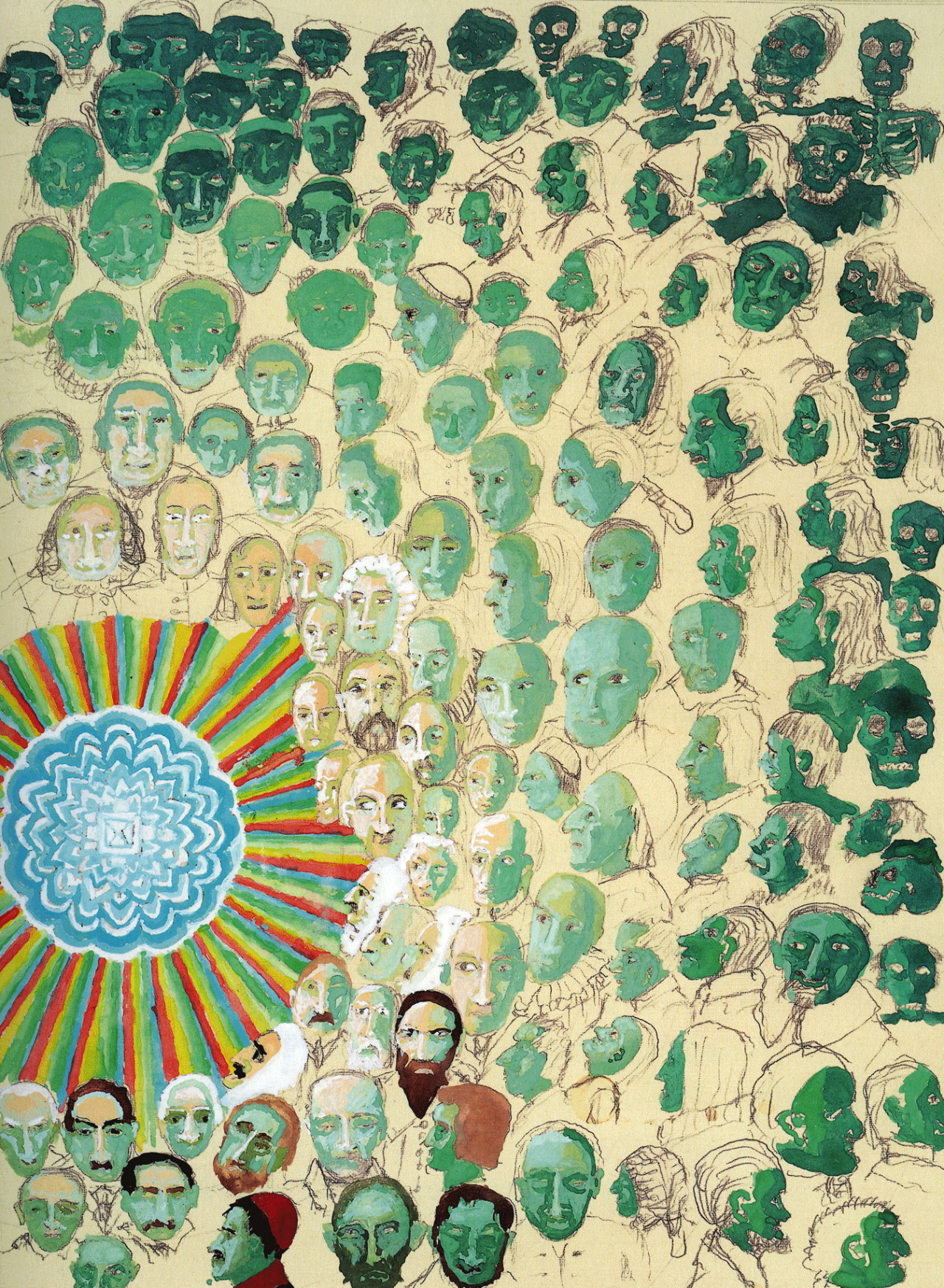
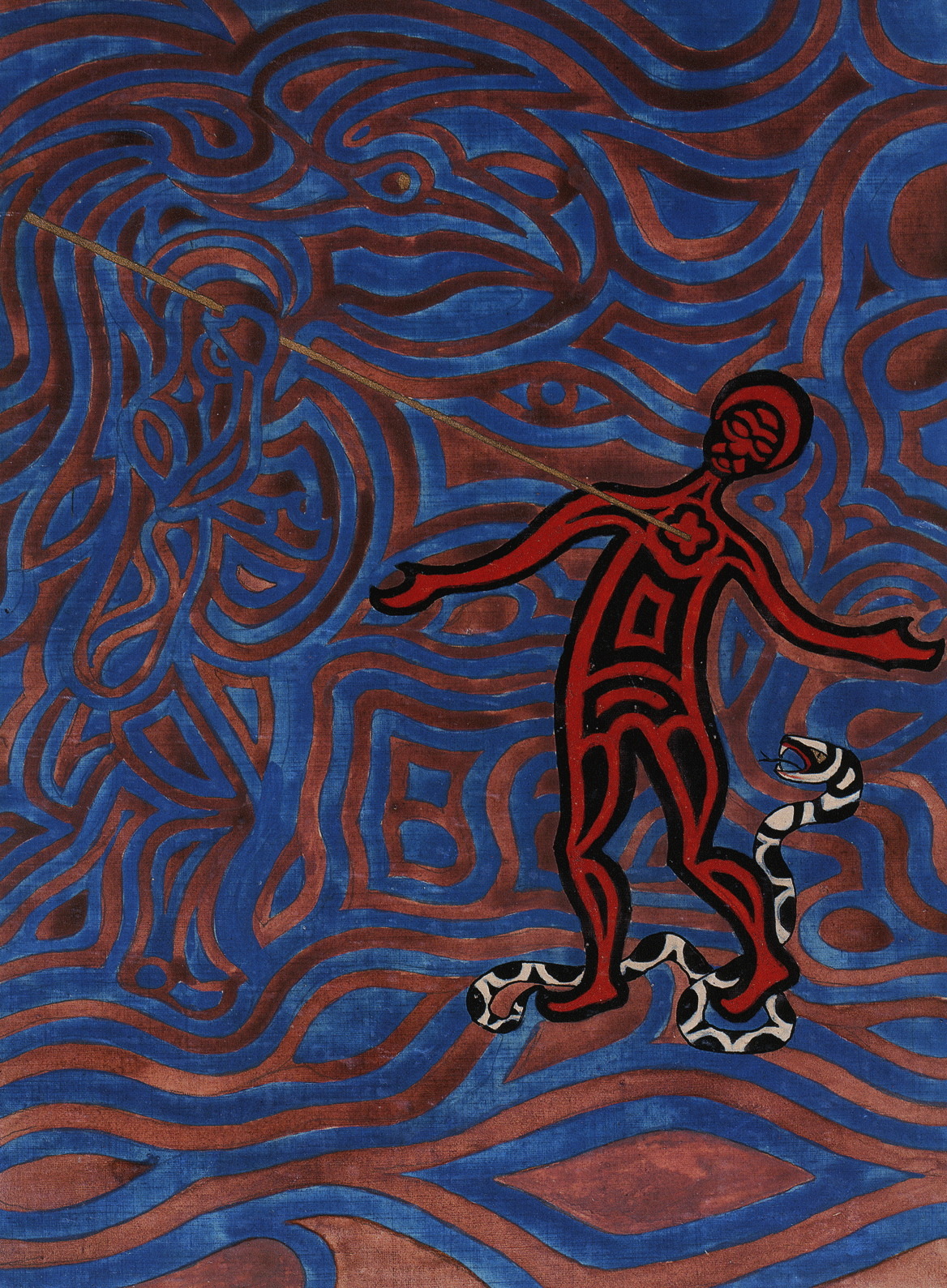
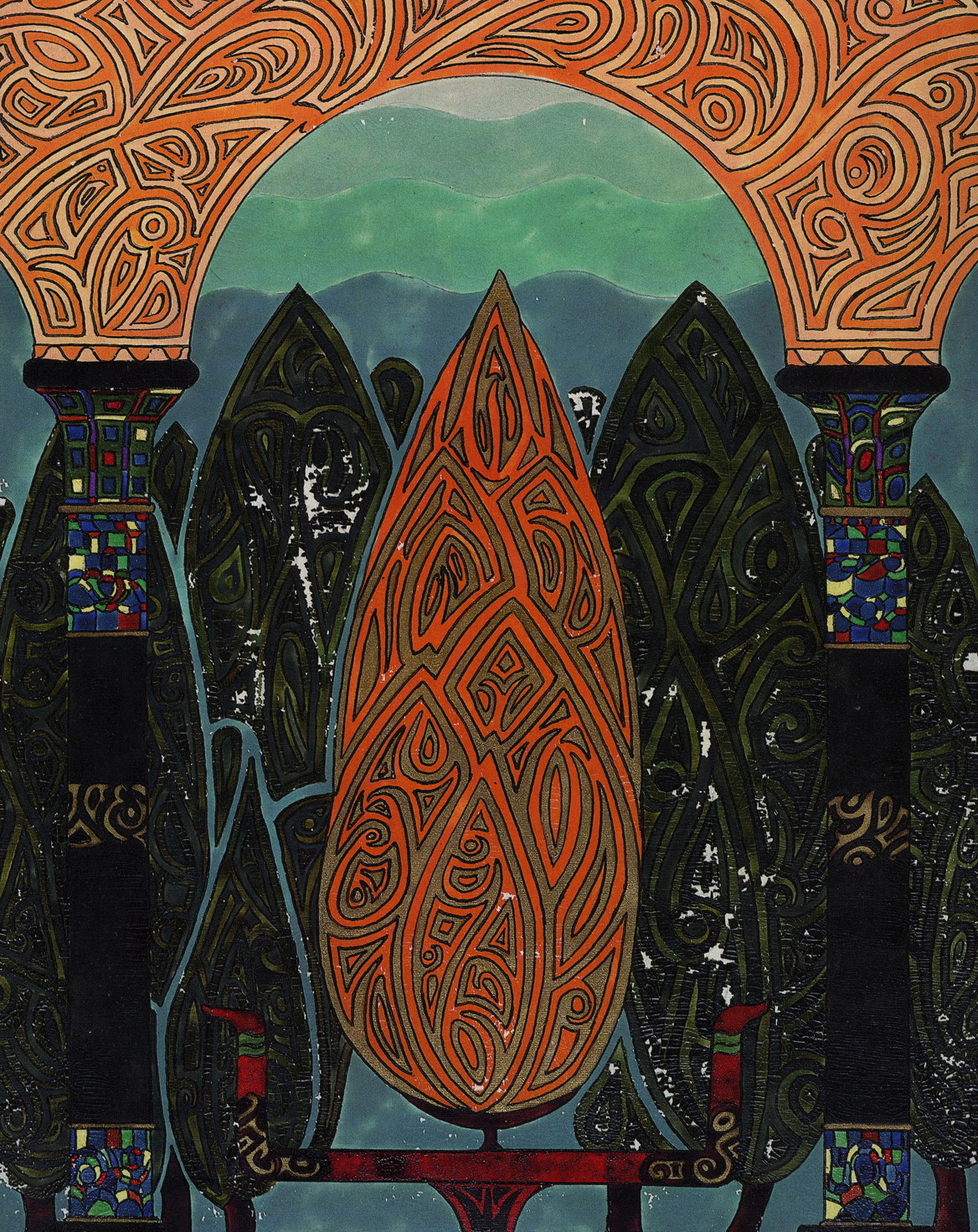
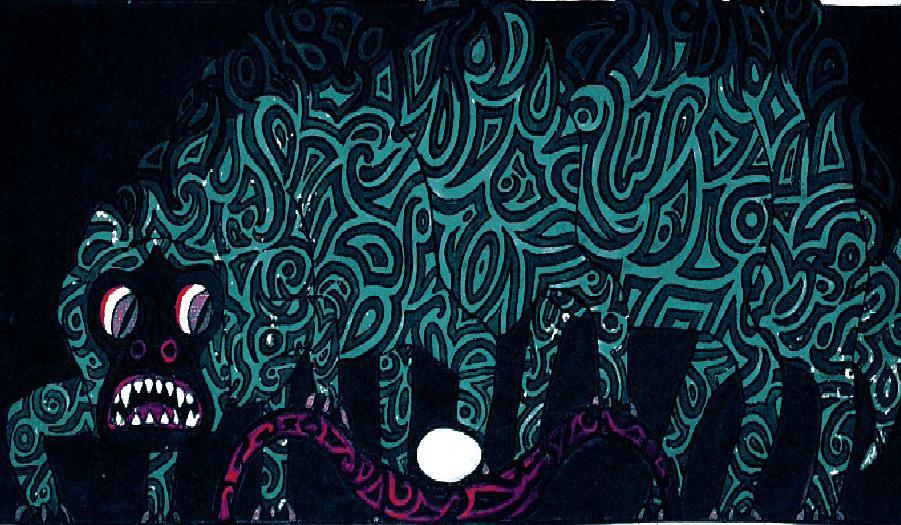
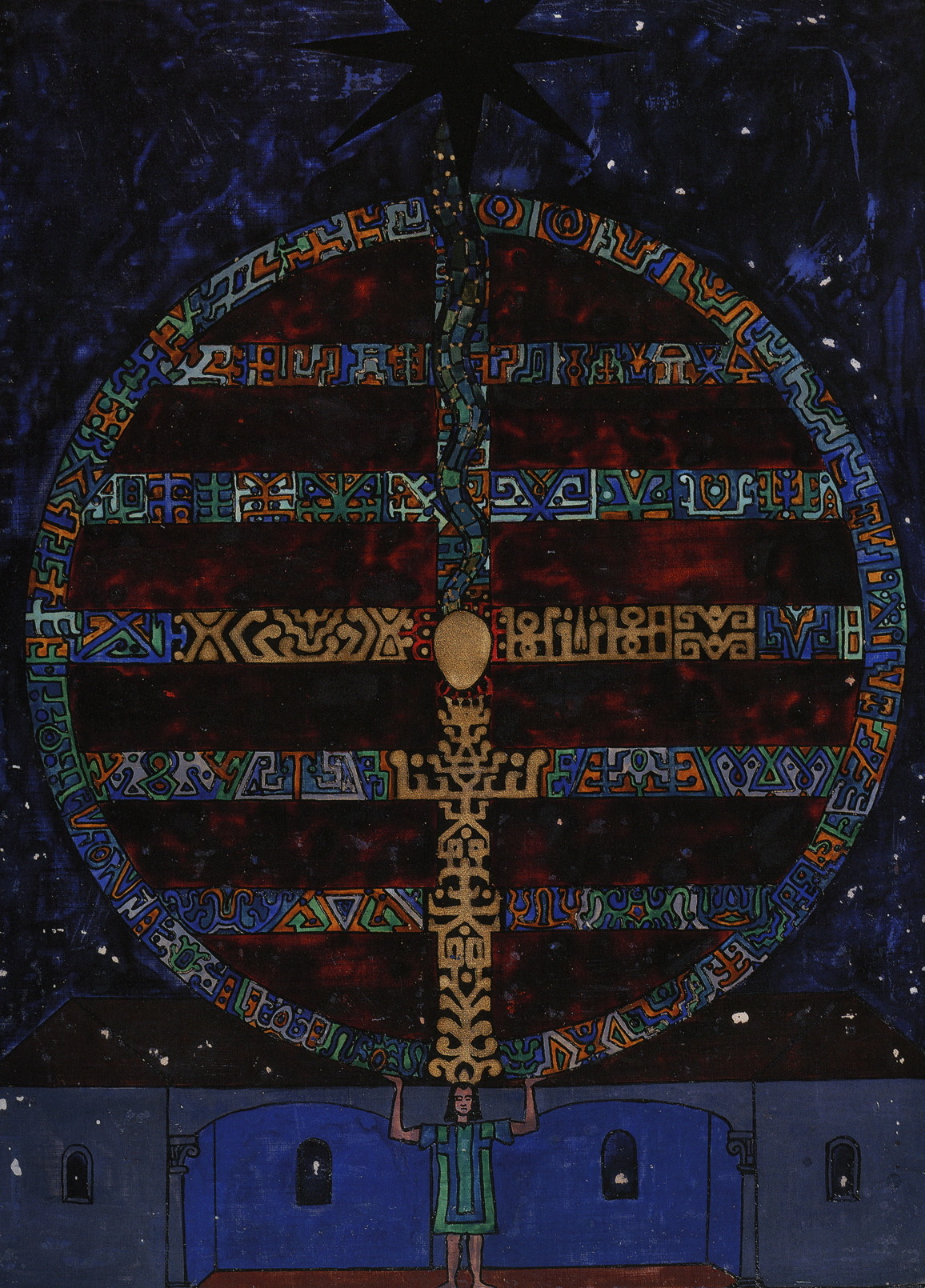
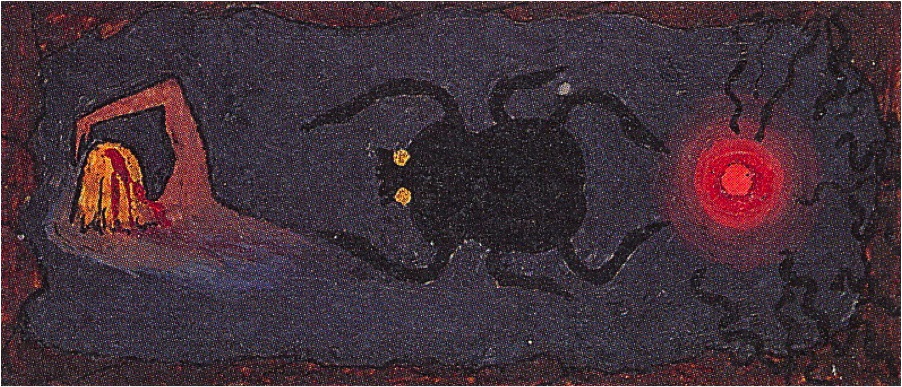
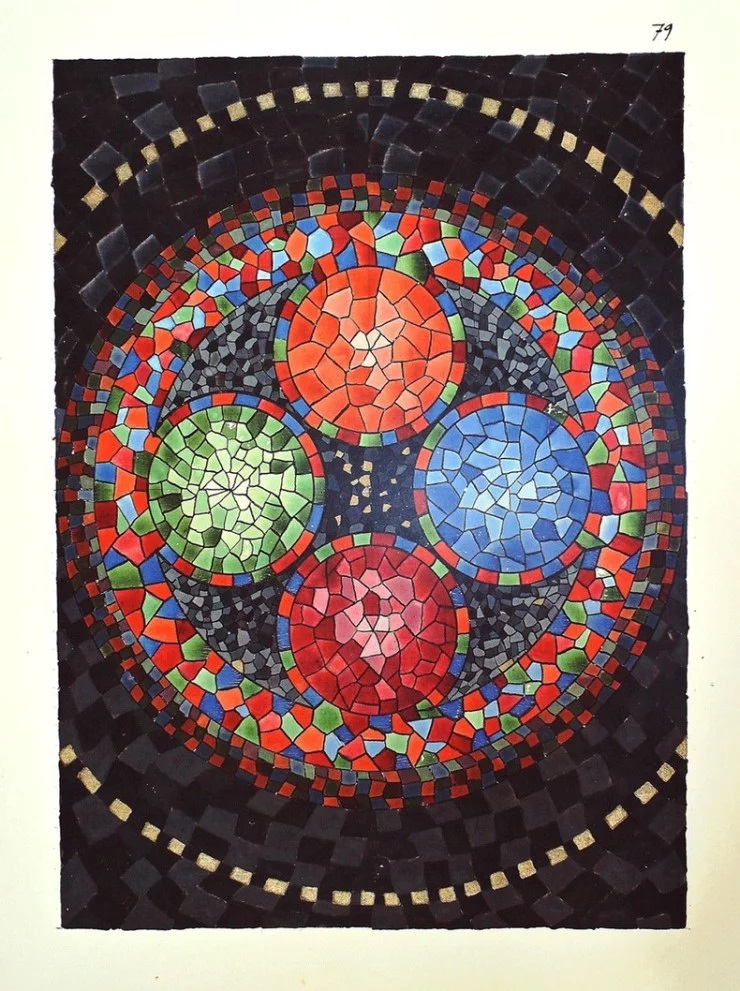
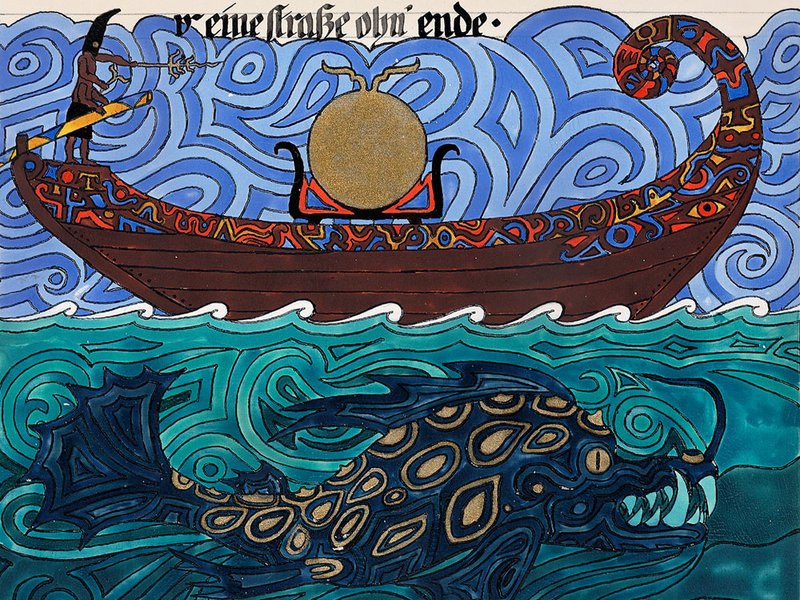
*
p.s. Hey. Today postmaster Sypha aka the honorable scribe James Champagne asks you to give it up for the lesser known side of the otherwise ultra-known Mr. Carl Jung, and it’s an eye opener, so scroll/scour/enjoy and pass a thought or more along to James in the commenting arena, if you will. Thank you, and thanks galore to you, James. ** David Ehrenstein, Hi. ** Steve Erickson, Hey. Do you know the films of the mysterious, possibly mythical 1960s director J.X. Williams? I saw a program of his films here last night hosted by filmmaker/Slamdance honcho Noel Lawrence. Curious. ** _Black_Acrylic, Hi. Thank you! I know, still fresh as the veritable daisy. Swung me off on a no small Acid House listening jag, it did. Have a great day! ** Well okey-doke. You know what’s up above, and you know what to do with it. See you tomorrow.




 Now available in North America
Now available in North America 
the cool thing about sypha / james is that articles like this read hyper-casually and conversationally and sometimes literary… but his books read like categorical traditionally academic non-fiction prose. it means that jc’s work has this really interesting kind of ellipse quality where what is expected and what is often refuses to align, doesn’t quite gel, whatever. how are things with you? things here are still materially great but around the outside a bit strange and unusual
Wow, Sypha! Ol Carl clearly got ahold of some Owsley’s!
Oh to be Jung and Foolish!
“J.X Williams” smells like “Catfish” to me.
Hey Dennis, thanks for hosting this!
Thanks for the glimpses into the Red Book, Sypha. I especially like how he works with mosaic-like patterns. I’m not a fan of the Cronenberg movie; I think it would have been more interesting if the Red Book had more of a presence (but that’s not what it was about).
Hey Dennis, after a brief respite, we’re back to our normal (colder) February weather here. Mostly hacking away, getting ready for a little live radio gig this weekend:
http://kzsu.stanford.edu/dayofnoise/2020/
We’re on at 8:30pm, not a civilized time for you. But they do archive the video for later curiosity.
Also admiring this:
https://www.youtube.com/watch?v=3iXKKQ5iUi8
Bill
The Cronenberg film pretty much ends right around the point where Jung began having his visions, so yeah, would have been hard to work the RED BOOK into it… I actually find the film fascinating because, unlike a lot of Hollywood films based on real-life events, it really sticks to the facts and doesn’t make shit up, which perhaps explains why it’s so static and mostly undramatic.
Oh boy, the Red Book!! Very cool to see it here. I’m a big Jungian, duh. It’s a wonderful object, this book. Like you say Sypha it is way too humongous to either fit on normal shelves or be handled easily, but I kinda like that – it makes reading it more like a ritual experience. It’s a lot of dough but seriously the print quality is out of this world. Worth it. Your intro to it was great too.
Dennis, buddy, uh, what was I saying last time, that Brexshit sucked? Yeah I don’t have any hotter take than that to be honest. So far 2020 is pretty depressing but how much of this is due to personal psychic landscapes and how much to an objective suckiness of the outside world, I mean, who can ever disentangle that stuff anyway. What’s new, let’s see… I am reading the Lynch biography, Room to dream. It’s very fun. Very colloquial and approachable, which is exactly what he comes across as. You guys belong to the same ‘completely well-adjusted, very friendly dude who loves coffee and creates some dark-ass shit’. It’s a more crowded club than people think I reckon. I wonder if there is a reverse club of ‘very dark, messed-up people whose art is all cutesy pop’…?
Oh, in other news, I’ll be in Paris late March for some work stuff – I hope we can catch up !! X
Sypha — I had a mild infatuation with Jung shortly before the Red Book was published. I remember getting it from the Austin public library when it first become available around 2010 (since the price tag was indeed prohibitive). One of the paintings you selected was also the one that most stood out to me (the one with all the green faces). I gave serious thought to razoring it out to hang in my apartment, but my conscience got the better of me. Anyway, nice seeing these again today, so thanks for that!
Obscure European prog rock album art is always the best type of art! Some fantastic imagery here.
This evening I was at the university’s Writing Short Stories class and enjoyed it a great deal. A smaller group this time with a few younger students, and I’m hoping it might be the kick up the arse my creative mojo needs.
Hi guys. So weird I was grading freshman essays until 5:00 this morning and then smoked a big ball of hash, and soon I could not tell if my eyes were open or shut, and I was in a world of moving and evolving patterns, lights, and lines against invisible shapes. Then when I got back tonight after seeing Steve Nelson play his xylophone at Cafe Central in Madrid, I sat down and wrote about the psychedelic experience, and it was not until after posting it that I saw the link to this page with some of the exact same imagery as I had seen 20 hours earlier and written down 5 minutes earlier, including the worm with teeth.
No, I have only read Williams’ name (back when cult film fanzines were plentiful.) How were his films?
I saw the North American premiere of Mehrdad Oskouei’s SUNLESS SHADOWS today at MOMA. This is the fourth film he’s made in a row about teenagers in juvenile detention centers or prison, and it could be edited together with his last one, STARLESS DREAMS, into a lengthy feature. But here, he focuses on girls who are in jail because they killed abusive relatives, often with their mothers. It will be released in the US later this year.
Aw wow, thank you very much, that all means a lot to me! I would be super honored to share more sometime when I have some pieces I’m confident in, haha. And thank you! Somehow it did end up being a bit more special than usual. That’s awesome to hear about the gallery. The setup looked interesting, particularly the idea of seeing them on a larger screen. I think the first time I read your GIF novels I did so on my phone.